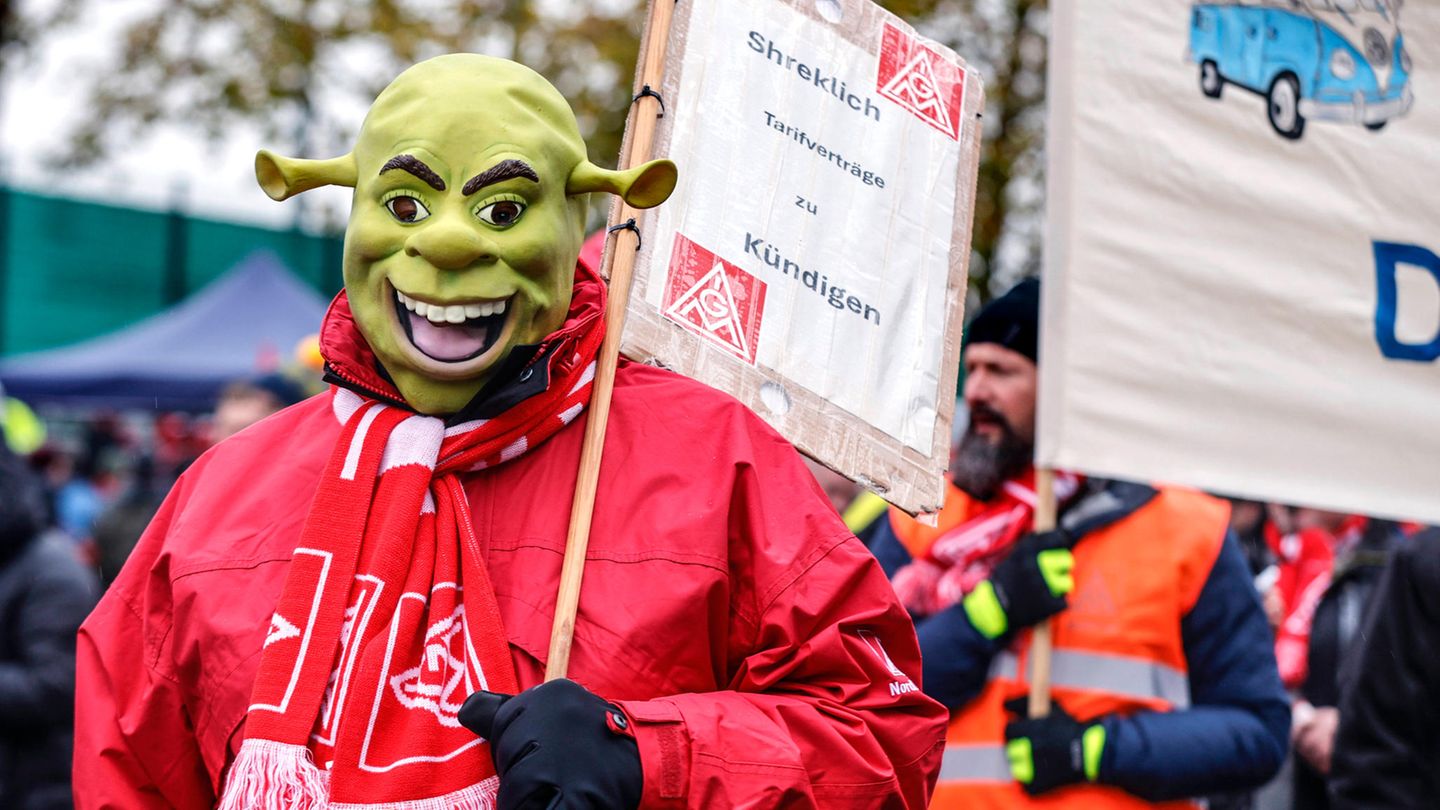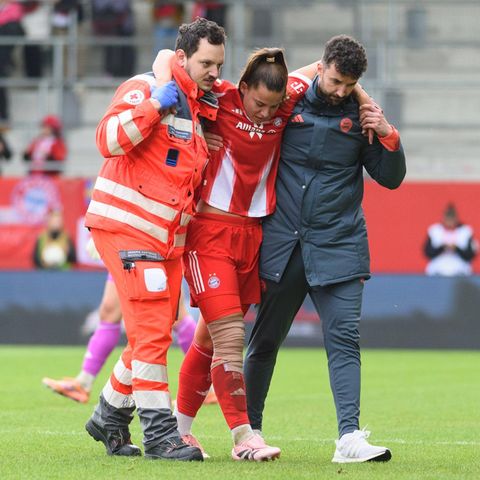Crisis at VW
Oh horror, a warning strike! What is that actually?
Copy the current link
The VW crisis threatens job cuts and factory closures. The workforce starts the industrial action with warning strikes. What is that anyway? And what happens after that?
Car maker Volkswagen is not doing well. According to the group’s board of directors, the main problem is that personnel costs are too high. There is a risk that several plants will be closed and tens of thousands of jobs will be cut. For the management team, the matter seems clear. Only personnel cuts can solve the problems. The VW workforce doesn’t want to accept this. The dispute between the two sides is not yet a tough industrial dispute.
A foretaste of this can be seen at the start of the week: The IG Metall union had called for warning strikes across Germany this Monday.
Employees stopped work in nine of the ten German VW plants. Why isn’t this a “normal” strike? What’s the difference? Four questions and answers about the warning strike.
What is a warning strike anyway?
From the outside, a warning strike looks like this: The workforce of a company stops work for a period of time per day and usually leaves the building. Outside, the employee representatives then give fiery speeches. In it they justify the warning strike, attack the employers’ side and threaten harsh consequences if the bosses do not accommodate them in collective bargaining, for example.
The employees loudly express their displeasure and their approval of this abrasion of the bosses. Then it’s back to work.
Another option that has now also been used at VW: so-called early closing campaigns take place. In this case, the workforce does not resume the paused work and goes straight to the end of the workday.
How a warning strike is carried out in detail can vary. However, all of the activities that are part of such an event have one thing in common: no work is done.
What distinguishes a warning strike from a real strike?
The warning strike is the last resort before a conflict between bosses and employees turns into a real industrial dispute. It is intended to be a foretaste for the management team of a company – of a standstill that will last longer than a morning or afternoon and will be far more unpleasant.
Unlike a long, all-out strike, a warning strike doesn’t really harm a company. Rather, it should have a signal effect and indicate: “If you don’t hear us, we’ll soon go to the barricades.” At the same time, it also marks a very specific point in time in a collective bargaining dispute. When the unions call for warning strikes, they are making it clear that they currently view the negotiations as a failure.
A warning strike and a normal strike differ mainly in their purpose and duration.
Warning strikes are short-term measures to exert pressure, while normal strikes are longer, more decisive actions to assert employee interests.
Is the warning strike in the law?
Strikes, including warning strikes, are anchored in the Basic Law in Germany. Article 9(3) states: “The right to form associations for the purpose of maintaining and promoting working and economic conditions is guaranteed to everyone and to all professions.” This means that people can, for example, organize themselves into a union in order to strike as a group. This is the right to freedom of association. However, the law does not guarantee strikers much more than further protection of this right.
So-called wildcat strikes that are not organized by unions are illegal. Warning strikes and normal strikes are also subject to the ultima ratio principle, which states that industrial action may only be taken after collective bargaining has failed. Various courts have further defined the right to strike and the conditions for the permissibility of strikes in their rulings. These include questions of proportionality and the necessity of strikes. A strike should focus on enforcing collective bargaining rights.
Indirectly, the right to strike can be seen as a fundamental right, but it is subject to conditions.
What’s next at VW?
Things are now entering the hot phase at VW. The current warning strike is the first since 2018. The fronts between the board of directors and the workforce have not been this hardened for a long time. The workforce does not want to accept the closures and job cuts. Management rejected a proposed solution from the employees at the third collective bargaining session at the end of November.
The termination of several collective agreements between IG Metall and Volkswagen was initiated by the car manufacturer. He terminated six contracts with the union as of December 31, 2025. There is now a dispute over the redesign of these. The fourth round of negotiations will take place on December 9th. A rapprochement between the two parties seems unlikely.
Jan Mentrup, press spokesman for IG Metall Lower Saxony and Saxony-Anhalt, told the star: “How long and how intensively the conflict has to be conducted is up to the board of directors at the negotiating table. We will meet next on December 9th. We have presented an overall concept and have thus taken a big step towards the company. ” Now it is Volkswagen’s turn to say goodbye to its maximum position and also move forward. This is the prerequisite for a solution-oriented negotiation process.
“We don’t want this conflict and were even prepared to go to the pain threshold of what is acceptable for the workforce with our proposal and a contribution to labor costs in the overall concept,” said Mentrup. “But without the contribution of the board of directors and the shareholders as well as sustainable employment security, it won’t work. Christmas is in a few weeks, we want to come to a solution – but a good one for the employees, without factory closures and waves of layoffs. Today has shown: The The workforce is ready to strike! And if necessary, we will tighten the thumbscrews further!”
VW has prepared for a warning strike
On Sunday after the strike announcement, Volkswagen said it wanted to “keep the impact of the warning strike on customers, partners and industrial plants “as low as possible”. “That’s why the company has already taken targeted measures in advance to ensure emergency supplies.” The company respects the right of employees to take part in a warning strike and continues to focus on constructive dialogue.
However, the group was tough on the matter: VW rejected the counter-concept from IG Metall and the works council on Friday as inadequate. The car manufacturer justifies the cuts with high costs and low utilization. In view of the weak demand for new cars, VW has to increase its savings efforts.
with dpa
Source: Stern





